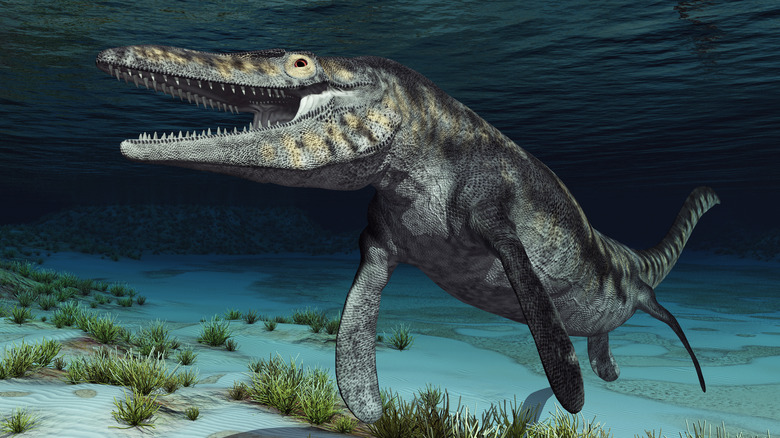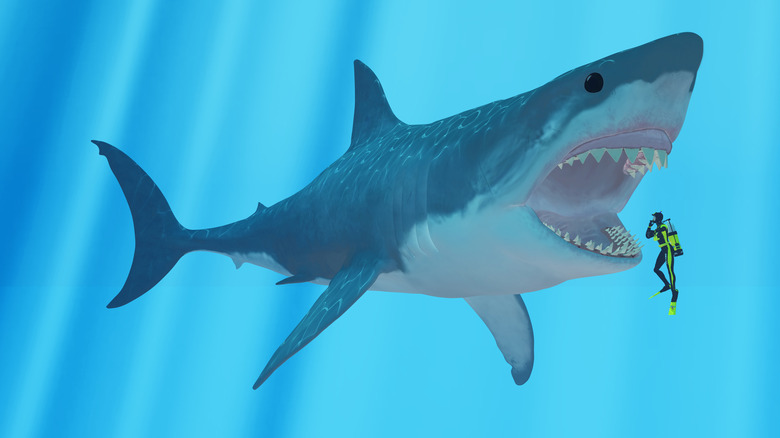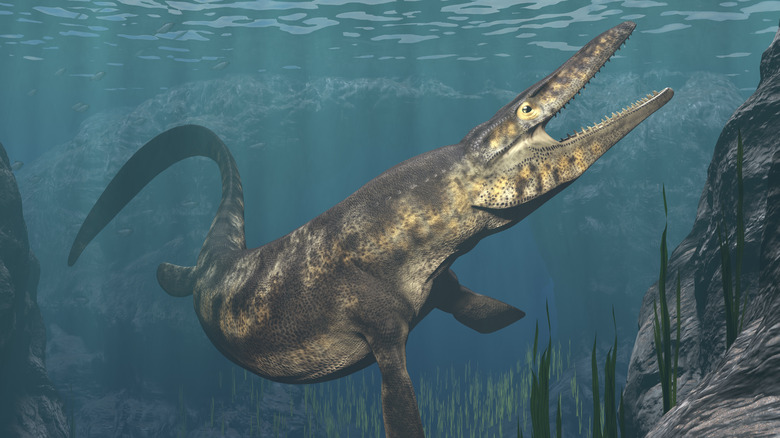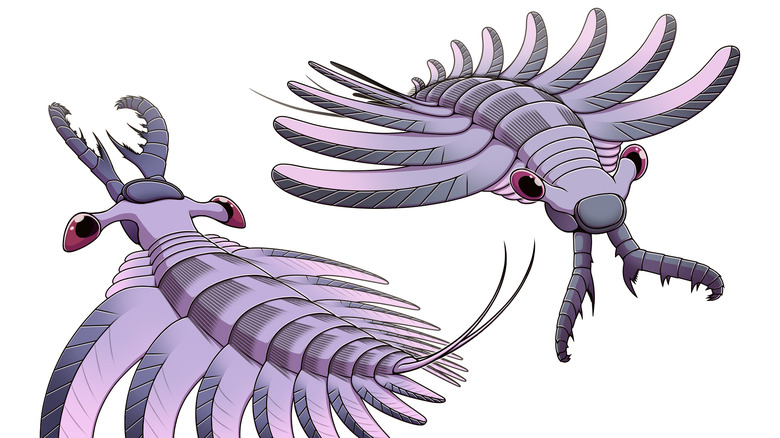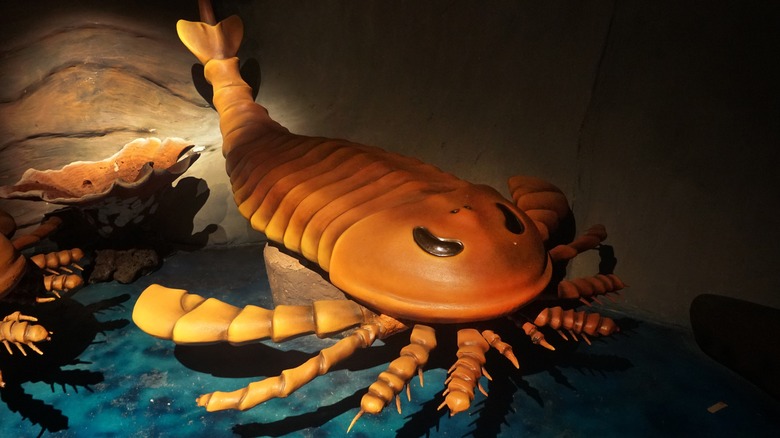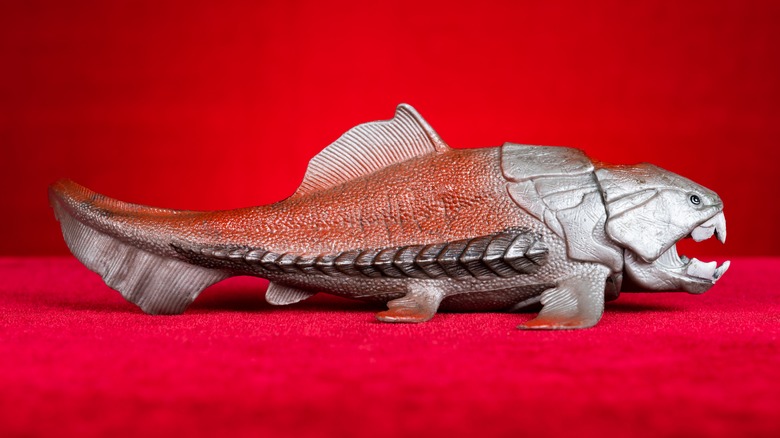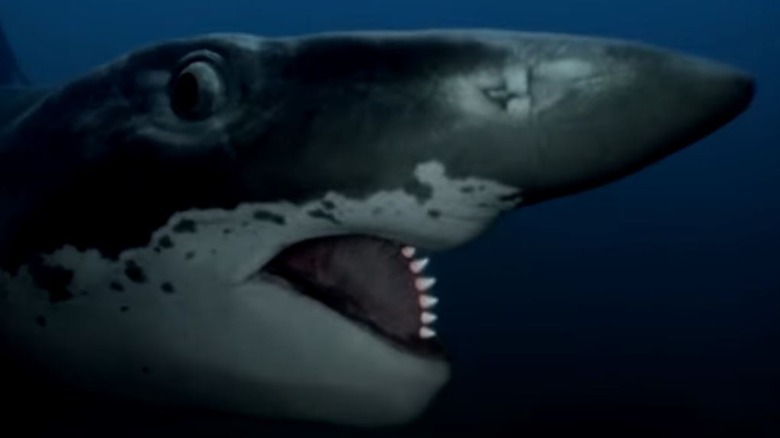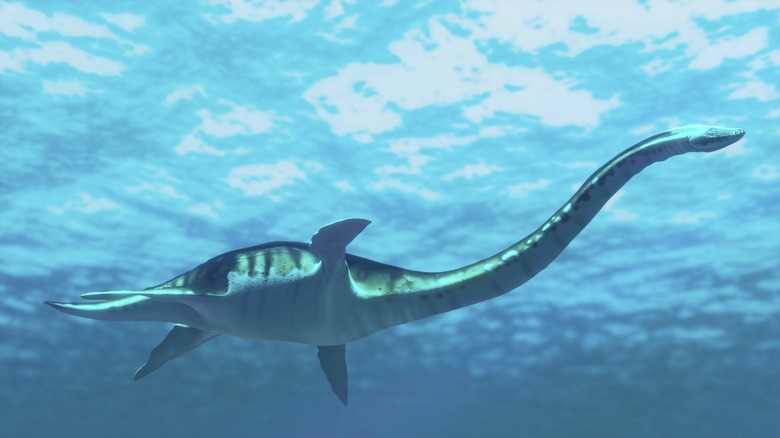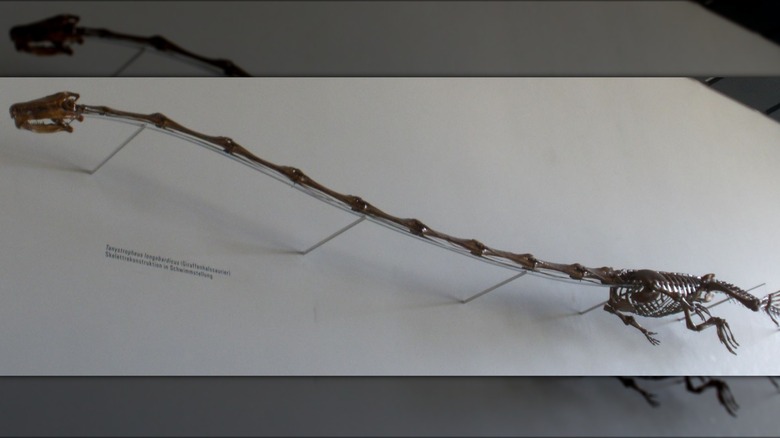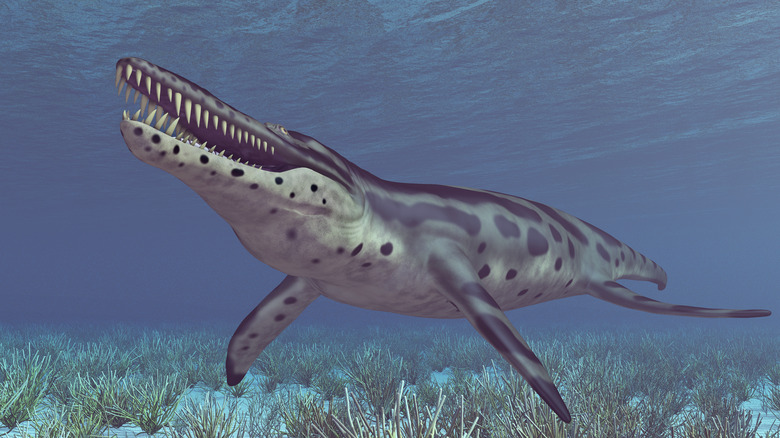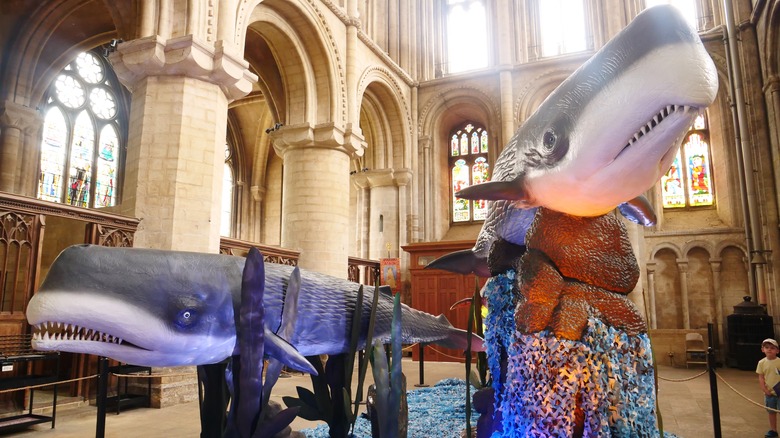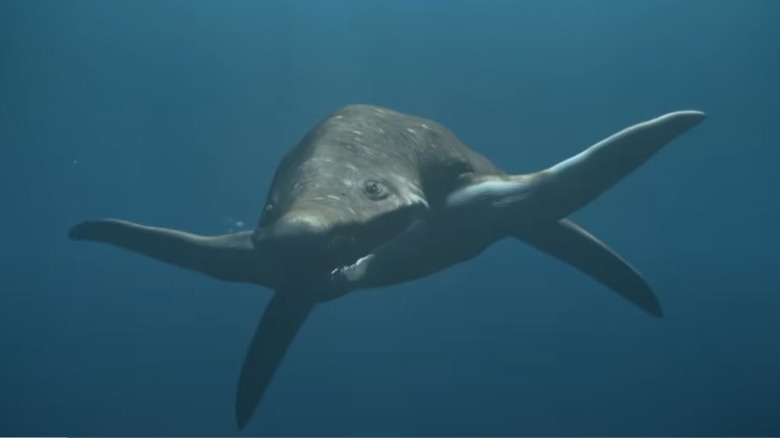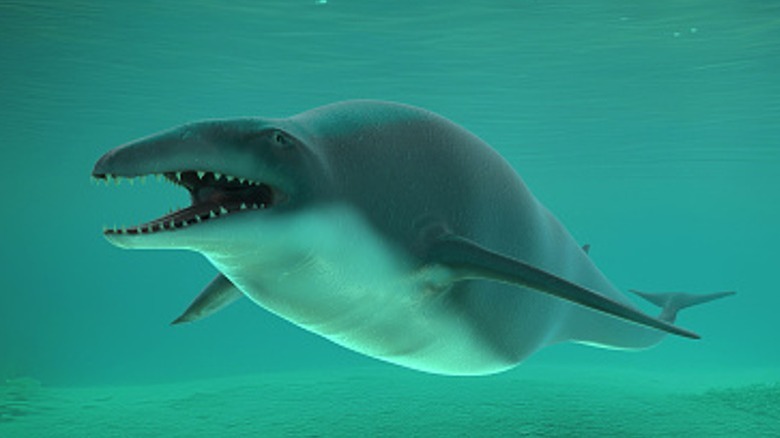These 12 Prehistoric Sea Animals Are Pure Nightmare Fuel
The sea can be a very scary place. Apart from terrible storms and other dangers that a vast body of water can pose without any extra help, the human mind can easily get preoccupied with sharks, giant marine cephalopods, and various borderline unimaginable animals that lurk within. And that's just the sea today. Back in the day, things were a whole lot scarier.
There has been life in the sea for over 3.5 billion years, and more complicated lifeforms started emerging some 560 million years ago. Things got truly interesting some 20 to 70 million years after that, when a strange evolutionary event called the Cambrian explosion caused marine life to evolve at a rapid pace. This started yielding some fairly curious results, and over the years, the depths of the seas have played host to all sorts of creepy and extremely dangerous animals. Here's a look at the strangest and most frightening ones.
Megalodon
Much like Led Zeppelin's "Stairway to Heaven" is a likely candidate to turn up on lists of best classic rock songs, the megalodon's presence here is unlikely to ruffle feathers. Thanks to the 2018 action movie "The Meg" and its 2023 sequel, this ancient megatooth shark enjoys a prominent pop culture presence few other sea beasts can hope to rival.
Not that the megalodon doesn't deserve every bit of this attention, though. Armed with massive teeth and a bite diameter of nearly 10 feet, it was a versatile apex predator that was able to haunt multiple parts of the ocean, based on its life cycle. Young specimens tended to stalk warm and shallow waters, but when they grew bigger and more powerful, they started venturing into deeper and colder areas to sate their hunger with larger prey ... which included more or less everything else in the seas, including whales.
The largest recorded fish species in history, the megalodon stalked the seas during the Miocene and Pliocene Epochs, from roughly 23 million years ago to around 2.58 million years ago. Physically, it likely resembled a gigantic white shark, with the average length of around 33.5 feet, though researchers have posited that the largest specimens could be up to 82 feet long. Oh, and to give you an idea of what awaited its prey, those mighty jaws could chomp with a bite force of up to 182,201 Newtons — nearly 10 times that of a white shark.
Mosasaur
Much like megalodons, the mosasaur has had its share of the limelight. In the "Jurassic World" series, the aquatic beast is the one predatory creature that's utterly invincible, to the point that it handily defeats the genetically-engineered Indominus rex monstrosity with a single bite.
The "Jurassic World" version of the creature is up to 262 feet long, which is obviously a fairly blatant exaggeration — as far as science knows, the biggest real mosasaurs were around 56 feet long. Apart from this size discrepancy, however, the cinematic creature's fearsome representation isn't all that far removed from the real historical mosasaur's status in the food chain. Agile and powerful, the mosasaur was one of the mighty marine predators during the Cretaceous Period of roughly 145 to 66 million years ago. They were equipped with fearsome jaws that could not only chomp with plenty of power, but were also able to spread out sideways if they were trying to chow down something particularly large.
Rather than a single species, mosasaurs were actually a group of similar reptilian predators, many of which specialized in specific types of prey. This was evident in their teeth. The mosasaurs that went after softer prey had serrated, sharp teeth, while ones that preferred shelled prey like turtles and crustaceans had rounded teeth that were custom designed for crushing.
Lyrarapax unguispinus
A truly ancient threat, the alien-looking, up to 3-foot-long arthropod known as Lyrarapax unguispinus reigned some 500 million years ago. Despite its vaguely Pokémon-like appearance and comparatively small size, the creature was an unstoppable menace of its time. In fact, scientists have theorized that these creatures may have been so dangerous, they may have assisted the rapid evolution of the Cambrian age. That's right, L. unguispinus may have been so deadly that other sea creatures started evolving ways to stay safe from these monsters.
The adult L. unguispinus specimens grabbed prey with their nasty face claws, but the larger creatures were only a part of the problem. Since newborn L. unguispinus were essentially just swarms of miniature versions of the adult ones, they could also hunt as soon as they were born — which, in turn, meant that even creatures that were too small for the adult beast to catch weren't safe from its kids.
The specific fact that L. unguispinus was able to sink its teeth on marine animals of all shapes and sizes is thought to have been a contributing factor in the Cambrian evolutionary explosion. After all, it's one thing to have a predator that stalks prey of a specific size — but since no one in the sea was safe from L. unguispinus and its young, everyone was forced to start rapidly experimenting with complex survival features.
[Featured image by Junnn11 via Wikimedia Commons | Cropped and scaled | CC BY-SA 4.0]
Sea scorpion
A scorpion without its poison stinger might not seem particularly terrifying ... until you find out that the animal in question is over nine feet long and is rapidly swimming toward you. Such is a the terror known as the sea scorpion, the top oceanic predator of the Silurian period (roughly 443.8 to 419.2 million years ago). Like Mosasaurs, sea scorpions — or eurypterids — were a wide group of predators under one umbrella, with the hulking Jaekelopterus rhenaniae the largest of them all.
With a protective exoskeleton for defense and nasty claws for offense, large sea scorpions were a top danger of the sea during their heyday. They were also highly mobile, to the point that they could migrate across entire oceans. This enabled them to become a global apex terror of the seas, but for reasons not entirely understood by science, the reign of the sea scorpion suddenly ended roughly 393 million years ago. This also marked the end of arthropods of such massive size, which makes the massive sea scorpions both true originals and the last of their kind — which might be sad for the Arthropoda phylum, but great news for ocean swimmers everywhere.
Dunkleosteus terrelli
Dunkleosteus terrelli prowled shallow waters during the Devonian Period of 419.2 to 358.9 million years ago, and it spent quite some time as a bit of an archaeological conundrum. Its gigantic, armored head and blade teeth made researchers suspect that it was a huge, shark-shaped superpredator that was some 30 feet long. However, in 2023, Russell Engelman of Case Western Reserve University posited that D. terrelli was actually a comparatively short, stocky animal.
"Dunkleosteus terrelli is already a strange fish, but it turns out the old size estimates resulted in us overlooking a lot of features that made this fish even stranger, like a very tuna-like torso," Engleman said (via Sci News). However, he did point out that the fact that the fish was "just" 11 to 13 feet long doesn't take anything away from its efficiency as a predator. "These things were built like wrecking balls," he said. "The new proportions for Dunkleosteus terrelli may look goofy until you realize it has the same body shape as a tuna ... and a mouth twice as large as a great white shark."
As if a well-armored, hungry, 13-foot fish with a huge mouth and giant teeth isn't chilling enough, D. terrelli was also unlike anything the world's oceans had seen at that point. It may have been the very first vertebrate superpredator in existence, as well as the single biggest creature of its day.
Helicoprion
Helicoprion isn't the biggest or fiercest shark-like predator on this list. However, it certainly has the most unique bite. When fossils of this animal started turning up, scientists were mystified by its strange buzzsaw-shaped tooth formation, and spent quite some time figuring out precisely where it goes. The problem was made worse by the fact that the fossils were incomplete, which caused various paleontologists to make a series of educated and outlandish guesses of its proper placement. Some thought it was a rolled-up external formation on the upper or lower jaw. Others posited that the tooth "whorl" was actually a series of spikes located elsewhere in the fish's body, or even that it was a completely round protrusion that made the animal resemble a pizza cutter.
In 2013, the truth finally emerged. Helicoprion's tooth whorl was a buzzsaw-like spiral structure that filled its lower jaw, and the animal itself was a shark-like prehistoric ratfish. The tooth whorl was a complicated apparatus where different teeth served their own purpose: With it, the helicoprion could hook the prey, cut it, and push it in its mouth in one swift motion. Because of this unique and eerie oral setup, the animal was able to eat just about any prey.
Plesiosaurus
Various types of plesiosaurs were found in many corners of the planet's oceans from 215 to 66 million years ago. The classic plesiosaurus was an early member of the team, and was roughly 15 feet long. It was instantly recognizable from its long neck, aerodynamic body, and prominent fins — as well as its sharp teeth, of course.
The plesiosaurus might be one of the most famous prehistoric aquatic reptile predators out there. This is not because it was the largest or the most terrifying-looking thing in the ocean — but because persistent theories suggest that they might still be around today. The Loch Ness Monster is one of the most famous cryptids in the world, and the possibility of its existence has continued to allure laymen and scientists alike. People have suggested that the legendary Scottish monster could be anything from a huge sturgeon or Greenland shark to a large eel, but one theory that keeps popping up is that the Loch Ness monster could be a surviving freshwater plesiosaur of some sort. While there's no solid evidence to support this theory — or any other Loch Ness monster theory, for that matter — it at least keeps the plesiosaurs' name on people's lips.
Tanystropheus
Tanystropheus hydroides is a peculiarity on this list in more ways than one. This up to 20-foot predator swam around the seas some 242 million years ago, and it's famous for making very little sense to paleontologists thanks to its huge-necked build that isn't quite fit for a marine animal or a land animal. Its neck was also remarkably stiff for its length, which added to the mystery. In 2020, reseachers finally figured out that the tanystropheus was a water predator that lived in shallow waters, likely lying still and snatching fish and squid as they swam by. There was also a smaller version of this peculiar predator called T. longobardicus.
This strange beast with its snake-like neck was no doubt a terrible foe for its prey, but its strange build meant that it wasn't without its own predators. The long neck was a bit of a weakness, and larger beasts with strong enough jaws were able to target it and even potentially decapitate the tanystropheus.
[Featured image by Ghedoghedo via Wikimedia Commons | Cropped and scaled | CC BY-SA 3.0]
Pliosaur
Pliosaurs were a terrifying aspect of life in the ocean from 200 to 65.5 million years ago. A group of monsters that varied greatly in size, they were mighty predators that enjoyed the combined advantage of strength, speed, and a maw full of sharp, ridged teeth that were custom designed for repeated bite attacks.
The large, powerful, and deadly pliosaurs were such efficient predators that Bristol University's Dr. Andre Rowe has compared them to another famous prehistoric danger. "The animal would have been so massive that I think it would have been able to prey effectively on anything that was unfortunate enough to be in its space," he analyzed a particularly well-preserved fossil in an interview with the BBC, "I have no doubt that this was sort of like an underwater T. rex." It's no surprise, then, that these creatures were the top dogs of their day, to the point that the biggest threat to a pliosaur was another pliosaur.
Pliosaurs varied widely in size, and as such, they can be difficult to categorize. One particularly difficult beast is the Kronosaurus, which was around 40 feet long and could swallow a person whole — though "whole" was an unlikely option for its prey, given its array of 12-inch teeth. While they're generally accepted to be a type of pliosaur, Kronosaurus fossils are so different from each other that researchers aren't completely certain which ones belong in the genus and which ones don't.
Livyatan
One of the great sea beasts in fiction is the titular white whale in Herman Melville's "Moby Dick." Appropriately enough, when scientists discovered a massive predatory whale from 12 or 13 million years ago, they named it Livyatan melvillei to pay homage to Melville's creation. In fact, the whale was so impressive that the original plan was to go all in on the monster front and call the creature Leviathan melvillei to combine the Moby Dick imagery with the name of a giant biblical sea serpent, but "Leviathan" was already taken, so they pivoted to the Hebrew word for the mythological creature.
So, how impressive was Livyatan to warrant such a cool scientific name? Impressive enough to handily beat a megalodon in a fight if necessary, it turns out. This prehistoric predator could be up to 60 feet long and somewhat resembled a massive sperm whale with a disproportionally huge, 4-foot-wide mouth that was full of 14-inch teeth. While it's clear that it was a highly dangerous apex predator, there are still many mysteries around Livyatan, seeing as only one partial skull has been found.
Predator X
The fascinatingly code-named Predator X is technically a pliosaur subspecies called Pliosaurus funkei, but its physical might and the initial mystery surrounding its discovery earn this terrifying marine hunter its own entry. Fossils of this 150 million-year-old creature were first discovered in 2006, and it was immediately clear that it was different from your average pliosaur, but it took until 2012 to figure out that the so-called Predator X was a whole previously undiscovered species.
A relatively late arrival in the pliosaur family, P. funkei was a 40-foot predator with large limbs that made it a particularly smooth swimmer. It lived in the Arctic area, and thanks to its brutal bite — four times stronger than T. rex, no less — it was perched firmly at the top of its era's food chain. As an example of its sheer power, scientists believe that some of P. funkei's favorite prey were none other than plesiosaurs, which weren't exactly pushovers themselves.
Basilosaurus
Basilosaurus might look goofy, but encountering one in the prehistoric ocean some 35 million years ago was nothing but bad news. The long-headed, 70-foot predator resembled a combination of a sea serpent and a stretched-out whale, and it was, in fact, a primitive forefather of the latter. Its peculiar appearance made it a bit of a challenge for scientists, too — the name Basilosaurus literally translates to "king lizard," thanks to the early assumption that it was a massive reptilian creature. However, its appearance and the way it swam by writhing its tail belied the fact that it was actually an early mammalian predator.
As you might assume, a 70-foot, carnivorous, prehistoric whale has all the makings of an apex predator, and as a result, Basilosaurus ate pretty much whatever it pleased. Its diet included everything from other whales to sharks, and it could even chow down on turtles thanks to its teeth that were equally suitable for biting into hard shells and soft flesh.
